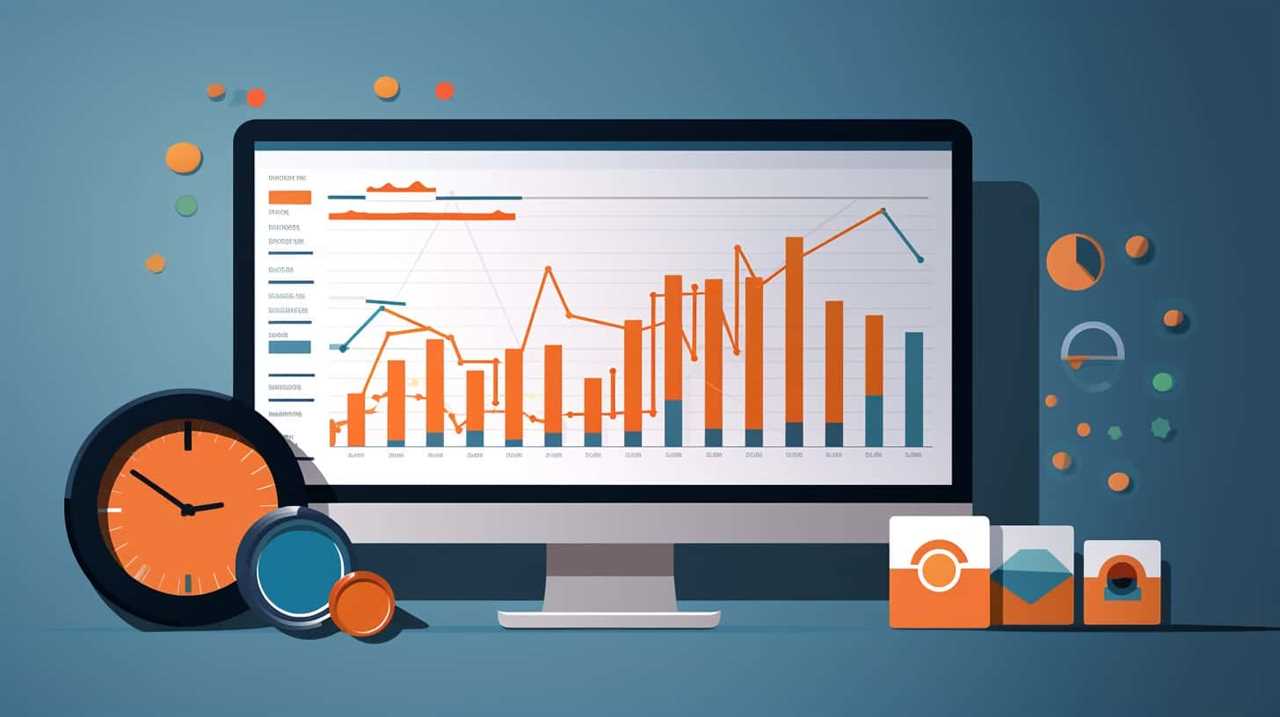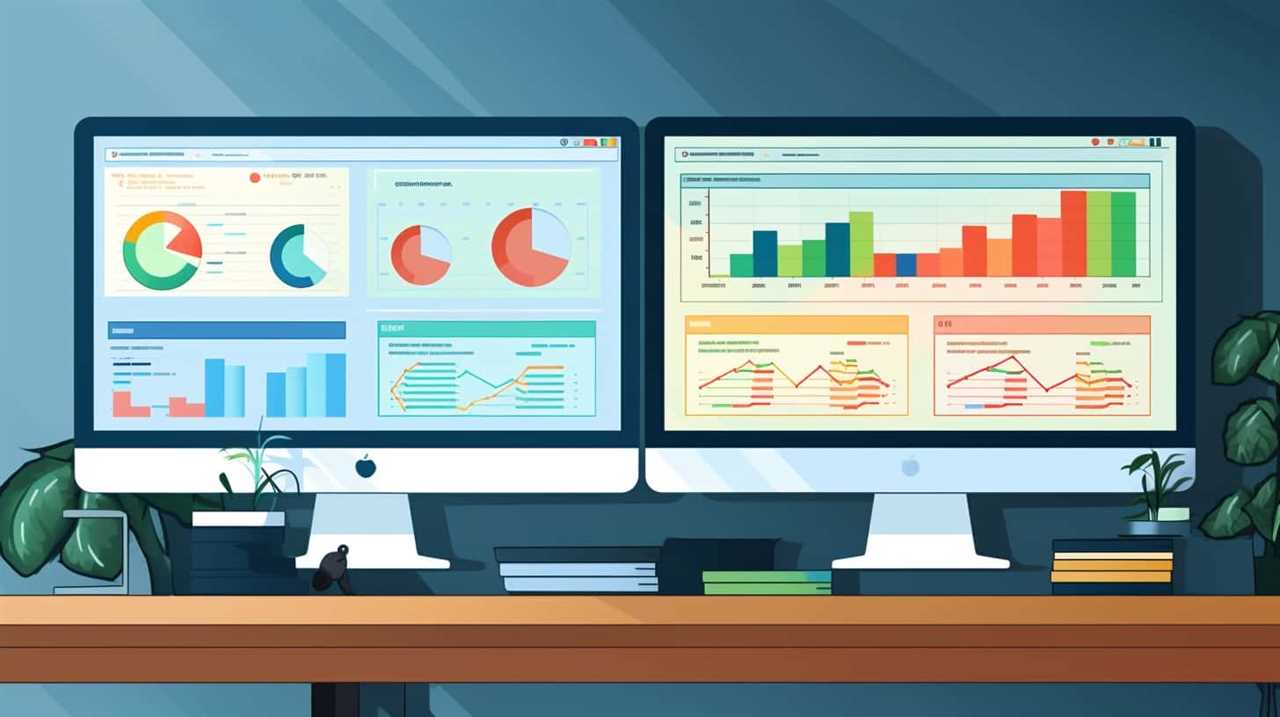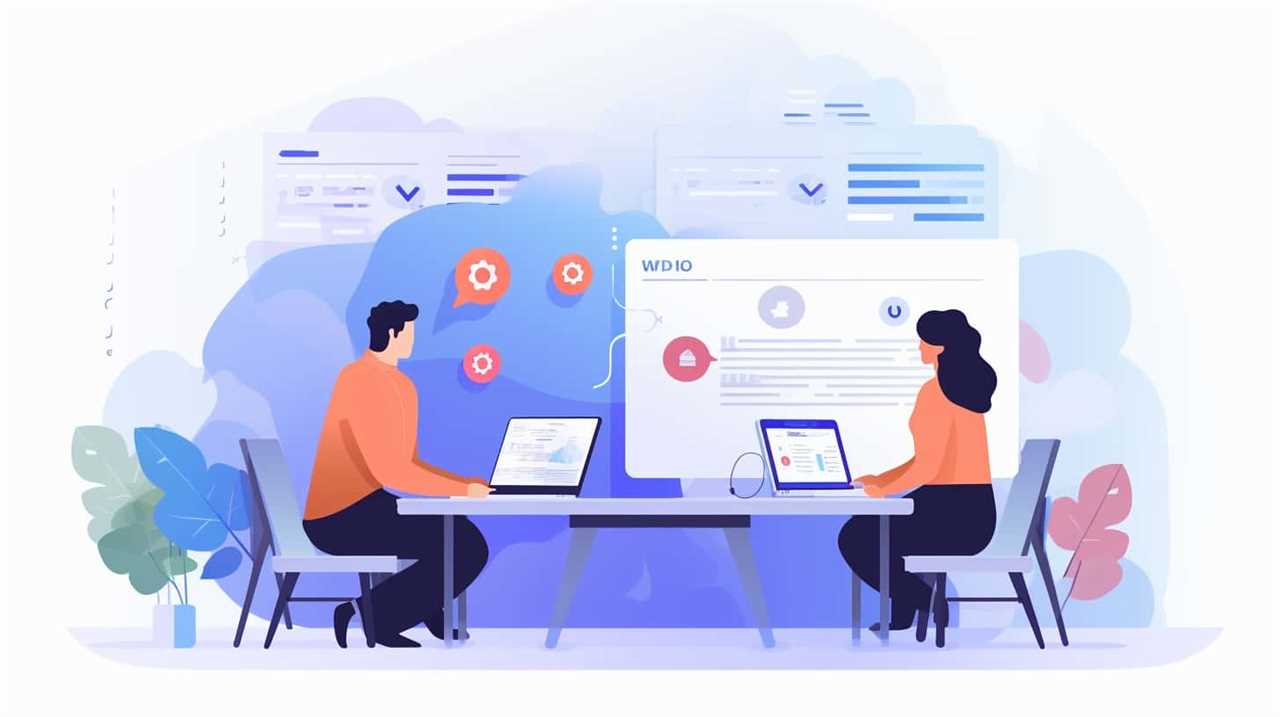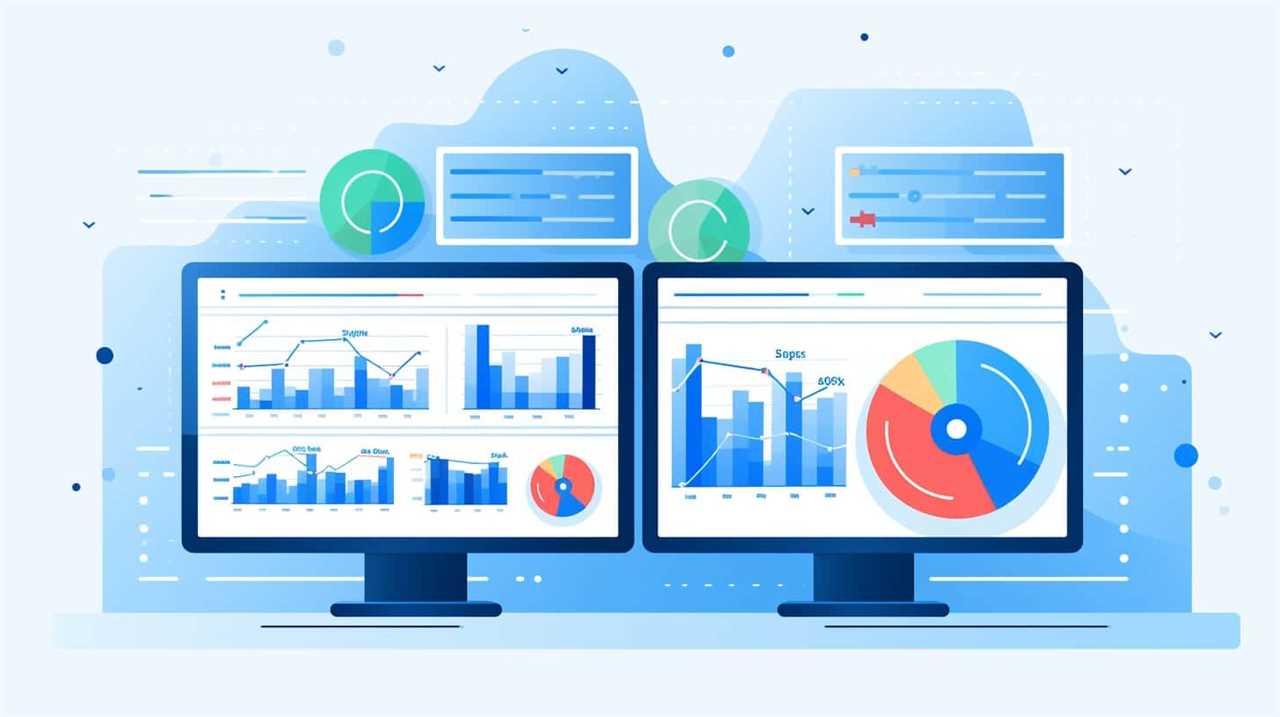Are you prepared to elevate your musical instrument shop to unparalleled heights?
We’ve got the inside scoop on how to master Google Ads and boost your online presence.
With our strategic tips and tricks, you’ll learn how to choose the perfect keywords, write compelling ad copy, and even leverage Google Shopping Ads for maximum instrument sales.
Get ready to tune up your online advertising game and watch your business thrive.

Let’s dive in!
Key Takeaways
- Google Ads is an effective advertising solution for music instrument stores, offering increased visibility and qualified leads.
- Ad targeting is crucial, as it allows stores to reach potential customers actively searching for music instruments.
- Thorough analysis of ad performance metrics, such as clicks, impressions, and conversions, helps optimize ads and improve overall performance.
- Crafting compelling ad copy and designing effective landing pages are essential for capturing audience attention and driving desired actions.
Why Google Ads for Music Instrument Stores
Google Ads provide an effective advertising solution for music instrument stores. As a music instrument store owner, you understand the importance of reaching your target audience in a strategic and engaging way. Traditional forms of advertising can be costly and may not always yield the desired results. This is where Google Ads come in. By utilizing Google Ads, you can effectively promote your music instrument store online and experience the many benefits of online advertising.
One of the key advantages of Google Ads is their effectiveness. With Google Ads, you have the ability to target specific keywords and demographics, ensuring that your ads are seen by the right people at the right time. This level of precision allows you to reach potential customers who are actively searching for music instruments or related products. By appearing at the top of search results, you can increase your store’s visibility and attract more qualified leads.
In addition to their effectiveness, Google Ads offer a range of benefits for music instrument stores. They provide a cost-effective advertising solution, allowing you to set a budget that suits your needs and only pay when someone clicks on your ad. This means that you can control your advertising spend and maximize your return on investment.

Now that we understand the benefits of Google Ads for music instrument stores, let’s dive into the basics of how to use this powerful advertising tool.
Understanding the Basics of Google Ads
Let’s explore the fundamentals of using Google Ads for music instrument stores.
When it comes to advertising your music instrument store online, it’s crucial to understand the basics of Google Ads. One of the key aspects to grasp is ad targeting. With Google Ads, you have the ability to reach potential customers who are actively searching for music instruments, allowing you to target specific keywords related to your products. This means that your ads will be shown to people who are already interested in what you have to offer, increasing the chances of conversion.
Another important factor to consider is ad performance. Google Ads provides you with valuable insights and metrics to help you evaluate the performance of your ads. You can track metrics such as clicks, impressions, and conversions to measure the effectiveness of your campaigns. By analyzing these metrics, you can make data-driven decisions to optimize your ads and improve their performance.

Understanding the basics of Google Ads is essential for successful advertising campaigns for your music instrument store. By utilizing effective ad targeting and monitoring ad performance, you can maximize your online visibility and drive more traffic to your website.
Setting Up Your Google Ads Account
When it comes to setting up your Google Ads account for your music instrument store, there are a few key points to keep in mind.
First, target audience selection is crucial in order to reach the right customers who are interested in your products.
Second, ad campaign optimization is essential for maximizing your ad performance and getting the most out of your budget.

Lastly, budget allocation strategies play a significant role in determining how much you want to spend on your ads and where to allocate your budget for optimal results.
Target Audience Selection
We carefully select our target audience when setting up our Google Ads account for music instrument stores. Audience segmentation and demographic targeting are crucial for reaching the right customers and maximizing the effectiveness of our ads. By understanding the characteristics and preferences of our target audience, we can tailor our ads to their specific needs and interests. This allows us to increase the likelihood of capturing their attention and driving them to our online store.
To further illustrate the importance of audience selection, consider the following table:
| Audience Segment | Demographic Targeting |
|---|---|
| Beginner Musicians | Age: 10-18, Location: Urban/Suburban, Income: Lower-Middle |
| Professional Musicians | Age: 25-45, Location: Urban, Income: Upper-Middle/High |
| Music Teachers | Age: 30-60, Location: Urban/Suburban, Income: Middle/Upper-Middle |
Ad Campaign Optimization
To optimize our ad campaigns, we focus on setting up our Google Ads account for music instrument stores. Ad campaign optimization begins with a thorough analysis of our campaigns’ performance metrics. By examining these metrics, we can identify areas that need improvement and make data-driven decisions to enhance the effectiveness of our ads.

Our ad campaign analysis involves measuring key performance indicators such as click-through rates, conversion rates, and cost per conversion. These metrics provide valuable insights into the success of our campaigns and help us identify any areas that require attention.
Budget Allocation Strategies
For effective budget allocation in our Google Ads account, we start by strategically distributing our funds across various campaigns and ad groups. This ensures that our budget is being utilized efficiently to target the right audience and achieve our advertising goals. To determine the best budget allocation strategies, we closely monitor campaign performance tracking.
By analyzing data such as click-through rates, conversion rates, and cost per acquisition, we can identify which campaigns and ad groups are performing well and driving the most value for our music instrument store. This allows us to allocate more budget towards high-performing campaigns and optimize underperforming ones.
By constantly evaluating and adjusting our budget allocation strategies based on campaign performance, we can maximize the impact of our Google Ads campaigns and drive increased traffic and sales for our music instrument store.

Now that we’ve discussed budget allocation strategies, let’s move on to the next important aspect of Google Ads for music instrument stores: choosing the right keywords.
Choosing the Right Keywords for Music Instrument Stores
Keywords play a crucial role in optimizing online visibility and attracting relevant traffic to music instrument stores. When it comes to Google Ads for music instrument stores, conducting thorough keyword research is essential. By understanding the search terms and phrases that potential customers are using, you can create targeted ads that appear when they’re actively searching for music instruments.
Google Ads keyword research involves identifying the most relevant and high-performing keywords that are related to your music instrument store. This process involves using tools like Google Keyword Planner to analyze search volumes, competition, and other metrics. By selecting the right keywords, you can ensure that your ads are shown to the right audience at the right time.
Optimizing ad visibility is another crucial aspect of choosing the right keywords. By incorporating keywords into your ad copy, you can improve the chances of your ads appearing in relevant search results. It’s important to strategically place keywords in the headline, description, and display URL of your ads to maximize their visibility.

Crafting Compelling Ad Copy
Crafting compelling ad copy is crucial when it comes to Google Ads for music instrument stores. The language used in the ads should be effective in capturing the attention of the audience.
Effective Ad Language
To create impactful Google ads for music instrument stores, we employ a strategic approach in selecting compelling ad language. By utilizing effective ad language techniques and persuasive messaging, we aim to captivate our audience and drive them to take action.
Here are three key elements we focus on when crafting our ad copy:
- Attention-Grabbing Headlines: We understand the importance of grabbing the reader’s attention right from the start. Our headlines are concise, catchy, and tailored to resonate with our target audience.
- Clear Value Propositions: We highlight the unique selling points of our products, emphasizing how they can benefit musicians. By clearly communicating the value our instruments provide, we encourage potential customers to choose us over competitors.
- Compelling Call-to-Actions: We use compelling language to encourage our audience to take immediate action, such as ‘Shop Now!’ or ‘Limited Stock Available!’ This creates a sense of urgency and prompts users to click on our ads.
Capturing Audience Attention
As we continue our discussion on effective ad language, let’s delve into the crucial aspect of capturing audience attention through crafting compelling ad copy. One of the key elements in creating engaging ads is choosing the right format to effectively communicate your message. To help you visualize this, let’s take a look at a table that outlines different ad formats and their potential impact on audience engagement:

| Ad Format | Description |
|---|---|
| Video Ads | Eye-catching and dynamic, video ads have the power to captivate viewers and convey emotions. |
| Carousel Ads | Multiple images or videos in a single ad, allowing you to showcase different products or offers. |
| Interactive Ads | Encourage user participation through quizzes, games, or other interactive elements. |
| Personalized Ads | Tailor your ads to specific audience segments, making them feel more relevant and compelling. |
Designing Effective Landing Pages
Creating high-converting landing pages is key to maximizing the effectiveness of our Google Ads campaigns for music instrument stores. A well-designed landing page can significantly improve our conversion rate and drive more sales.
To optimize our landing pages and increase their effectiveness, we should consider the following strategies:
- Clear and compelling headlines: We need to grab the attention of our visitors immediately with concise and engaging headlines. A strong headline that clearly communicates the value proposition of our products will entice users to stay on the page and explore further.
- Simplified navigation: A cluttered and confusing navigation can discourage visitors from taking action. We should streamline the navigation on our landing pages, making it easy for users to find the information they’re looking for and navigate to the desired section.
- Strong call-to-action (CTA): The CTA is the most critical element of a landing page. It should be prominently displayed, visually appealing, and clearly communicate the desired action. Using action-oriented language and creating a sense of urgency can help drive conversions.
Utilizing Ad Extensions to Enhance Performance
We enhance our performance in Google Ads campaigns for music instrument stores by utilizing ad extensions. Ad extensions are additional pieces of information that can be added to your ads to provide more value and increase visibility. By using ad extensions effectively, we can improve our click-through rates, ad quality scores, and ultimately drive more traffic to our website.
There are several ad extension benefits that we can take advantage of to enhance our campaign performance. Firstly, ad extensions allow us to provide more relevant information to our potential customers, such as phone numbers, location information, and additional links. This can help increase the credibility and trustworthiness of our ads, leading to higher click-through rates. Secondly, ad extensions can also improve our ad quality scores, which can result in higher ad rankings and lower cost-per-click. Lastly, ad extensions can help us stand out from our competitors by offering more valuable information and increasing our ad’s visibility on the search results page.

To make the most of ad extensions, it’s important to follow some ad extension best practices. Here is a table summarizing three key best practices:
| Best Practice | Description |
|---|---|
| Use relevant extensions | Choose ad extensions that are relevant to your music instrument store, such as call extensions for phone orders or location extensions for local customers. |
| Test different extensions | Experiment with different ad extensions to see which ones perform best for your campaign. Monitor their performance and make adjustments as needed. |
| Monitor and optimize performance | Regularly review the performance of your ad extensions and make adjustments to maximize their impact on your campaign’s performance. |
Optimizing Your Google Ads Campaigns
To further improve our Google Ads campaigns for music instrument stores, we can optimize them by implementing strategic adjustments and refining our targeting strategies. By focusing on ad scheduling and ad placement optimization, we can ensure that our campaigns are reaching the right audience at the right time, maximizing our chances of success.
Here are three key strategies to consider:
- Ad Scheduling: Analyze your campaign data to identify the most effective times and days to run your ads. Adjust your ad scheduling to align with peak customer activity and target potential buyers when they’re most likely to be searching for musical instruments online.
- Ad Placement Optimization: Take advantage of Google’s ad placement options to showcase your ads on relevant websites and platforms. Utilize contextual targeting to display your ads on websites related to music, music education, or instrument reviews, increasing the likelihood of reaching interested customers.
- Monitor and Refine: Regularly review your campaign performance metrics to identify areas for improvement. Use A/B testing to experiment with different ad variations, headlines, and images to determine what resonates best with your target audience.
Monitoring and Analyzing Your Campaigns
Now that we’ve optimized our Google Ads campaigns, it’s crucial to monitor and analyze their performance.

Tracking the performance of our campaigns allows us to see which ads are resonating with our target audience and which ones may need some adjustments.
Tracking Campaign Performance
One important step in optimizing our Google Ads campaigns is to regularly monitor and analyze their performance. By tracking campaign performance and conducting performance analysis, we can gain valuable insights into the effectiveness of our ads and make data-driven decisions to improve our campaigns.
Here are three key reasons why campaign tracking and performance analysis are crucial:
- Identify underperforming campaigns: By closely monitoring our campaigns, we can quickly identify any underperforming ads or keywords that may be draining our budget without providing desired results.
- Optimize ad spend: Performance analysis allows us to determine which campaigns are generating the best return on investment, enabling us to allocate our budget more effectively and maximize our ad spend.
- Refine targeting strategies: By analyzing campaign performance, we can identify patterns and trends in consumer behavior, allowing us to refine our targeting strategies and reach the right audience with the right message.
By monitoring and analyzing our campaign performance, we can make informed decisions to optimize our Google Ads campaigns and improve our ROI.

Now, let’s explore how we can further enhance our advertising efforts by optimizing ad targeting.
Transition: Now that we’ve a solid understanding of tracking campaign performance, let’s delve into the next crucial aspect of our Google Ads strategy: optimizing ad targeting.
Optimizing Ad Targeting
As we delve into the crucial aspect of optimizing ad targeting for our Google Ads campaigns, we continue to monitor and analyze our campaigns for better results. Ad targeting optimization is a key strategy in improving campaign efficiency and reaching the right audience.
By closely monitoring our campaigns, we can identify areas for improvement and make necessary adjustments to maximize our advertising efforts. Analyzing data such as click-through rates, conversion rates, and audience demographics allows us to make informed decisions on how to refine our targeting strategies.

This involves constantly testing and tweaking our ad settings, keywords, and audience segments to ensure we’re reaching the most relevant and engaged users. By staying proactive in monitoring and analyzing our campaigns, we can stay ahead of the competition and achieve optimal results.
Now, let’s explore the next section about retargeting strategies for music instrument stores.
Retargeting Strategies for Music Instrument Stores
How can we effectively implement retargeting strategies for music instrument stores using Google Ads?
Retargeting is a powerful technique that allows us to reach out to potential customers who’ve shown interest in our products. By segmenting our audience and tailoring our ads to their specific needs and preferences, we can increase the chances of conversion and maximize our return on investment.

Here are three key strategies for successful retargeting:
- Segmentation: To effectively retarget our audience, we need to divide them into specific groups based on their behavior and interests. We can segment our customers by their browsing history, previous purchases, or even by the specific instruments they’ve shown interest in. This allows us to create personalized ads that resonate with each segment.
- Dynamic Ads: By using dynamic ads, we can automatically display products that are relevant to each individual customer. For example, if a customer has previously viewed a guitar on our website, we can show them ads featuring that specific guitar or similar models. This personalized approach increases the likelihood of conversion.
- Frequency Capping: While retargeting is effective, bombarding customers with too many ads can be counterproductive. By setting frequency caps, we can control how often our ads are shown to each customer. This ensures that our ads remain relevant and not overly intrusive.
Leveraging Google Shopping Ads for Instrument Sales
Our music instrument store can maximize instrument sales by leveraging Google Shopping Ads. Google Shopping Ads are a powerful tool for instrument advertising and online marketing. They allow us to showcase our products directly on Google’s search results page, making it easier for potential customers to find and purchase the instruments they are looking for. By appearing at the top of relevant search results, we can increase our visibility and attract more qualified traffic to our website.
To effectively leverage Google Shopping Ads, we need to create high-quality product listings that stand out from the competition. This includes using compelling product titles, detailed descriptions, and high-resolution images. We can also add additional information, such as customer reviews and ratings, to build trust with potential buyers.
To further optimize our Google Shopping Ads campaigns, we can use the following strategies:

| Strategy | Description | Benefits |
|---|---|---|
| Target specific keywords | Focus on relevant keywords that our target audience is likely to search for | Increase visibility and attract qualified traffic |
| Set competitive bids | Adjust our bids to ensure our ads are competitive and receive sufficient exposure | Maximize impressions and clicks |
| Monitor performance | Regularly analyze campaign data to identify areas for improvement | Optimize ad spend and ROI |
Adapting to Mobile Advertising for Music Instrument Stores
To effectively adapt to mobile advertising for music instrument stores, we can utilize various strategies to optimize our campaigns and reach our target audience on mobile devices. Mobile ad design and mobile ad optimization are crucial components of this adaptation. Here are three key strategies to consider:
- Responsive Design: Ensure that your website and ad content are optimized for mobile devices. This includes using responsive design techniques to ensure that your ads are displayed correctly and load quickly on mobile screens.
- Location Targeting: Take advantage of location-based targeting options to reach potential customers who are in close proximity to your music instrument store. This can be done through geotargeting or by creating location-specific ad campaigns.
- Mobile-Specific Features: Incorporate mobile-specific features such as click-to-call buttons or app install prompts in your ads. These features make it easier for customers to contact you or download your app directly from the ad, increasing the likelihood of conversion.
By implementing these strategies, music instrument stores can effectively adapt to mobile advertising and maximize their reach to potential customers.
Now, let’s explore how budgeting and ROI tracking for Google Ads can further enhance our online advertising efforts.
Budgeting and ROI Tracking for Google Ads
Now, let’s delve into the importance of budgeting and tracking return on investment (ROI) for Google Ads to further optimize our online advertising efforts for music instrument stores. Budget optimization is a crucial aspect of any advertising campaign, and Google Ads is no exception. By carefully allocating our budget, we can ensure that we’re getting the most out of our advertising dollars. This involves setting a realistic budget that aligns with our marketing goals and continuously monitoring and adjusting it as needed.

Tracking ROI is equally important in order to measure the effectiveness of our Google Ads campaigns. Conversion tracking allows us to see which ads are driving actual sales or other desired actions, such as newsletter sign-ups or website visits. By analyzing this data, we can identify which ads and keywords are performing well and optimize our campaigns accordingly.
To effectively budget and track ROI for Google Ads, it’s essential to use the appropriate tools and strategies. Google Ads provides various features, such as campaign-level budgeting and conversion tracking, which allow us to set specific budget limits and track conversions accurately. Additionally, utilizing Google Analytics can provide further insights into the performance of our campaigns and help us make data-driven decisions.
Frequently Asked Questions
How Do Google Ads for Music Instrument Stores Compare to Other Online Advertising Platforms?
Using Google Ads for music instrument stores offers numerous benefits compared to traditional advertising methods. Targeting specific demographics allows for a more efficient and effective campaign, resulting in higher conversion rates and increased sales.
What Are Some Best Practices for Setting up a Google Ads Account for a Music Instrument Store?
When setting up a Google Ads account for a music instrument store, we focus on targeting strategies and optimization techniques. We’ll share effective ways to reach our audience and make the most out of our campaigns.

How Can I Effectively Choose the Right Keywords for My Music Instrument Store in Google Ads?
When choosing effective keywords for our music instrument store in Google Ads, we focus on optimizing ad targeting. We strategically select keywords that resonate with our audience, ensuring our ads reach the right customers at the right time.
What Are Some Tips for Creating Compelling Ad Copy That Attracts Potential Customers to My Music Instrument Store?
Crafting captivating ad copy is crucial for attracting potential customers to our music instrument store. Targeting the right audience ensures our message resonates. We’ll share tips to create compelling copy that leaves a lasting impression.
How Can I Track the Return on Investment (Roi) of My Google Ads Campaigns for My Music Instrument Store?
Tracking ROI in Google Ads campaigns for our music instrument store is crucial for analyzing the effectiveness of our ads. We can measure conversions, track revenue generated, and calculate our ROI to make strategic decisions and maximize our advertising budget.
Conclusion
In conclusion, harnessing the power of Google Ads for music instrument stores is a strategic move that can greatly benefit your business.

By understanding the basics, choosing the right keywords, crafting compelling ad copy, and implementing retargeting and Google Shopping ads, you can reach a wider audience and increase instrument sales.
Don’t forget to adapt to mobile advertising and closely monitor your budget and ROI.
With these tactics, your music instrument store can thrive in the online world and evoke a harmonious response from your customers.









